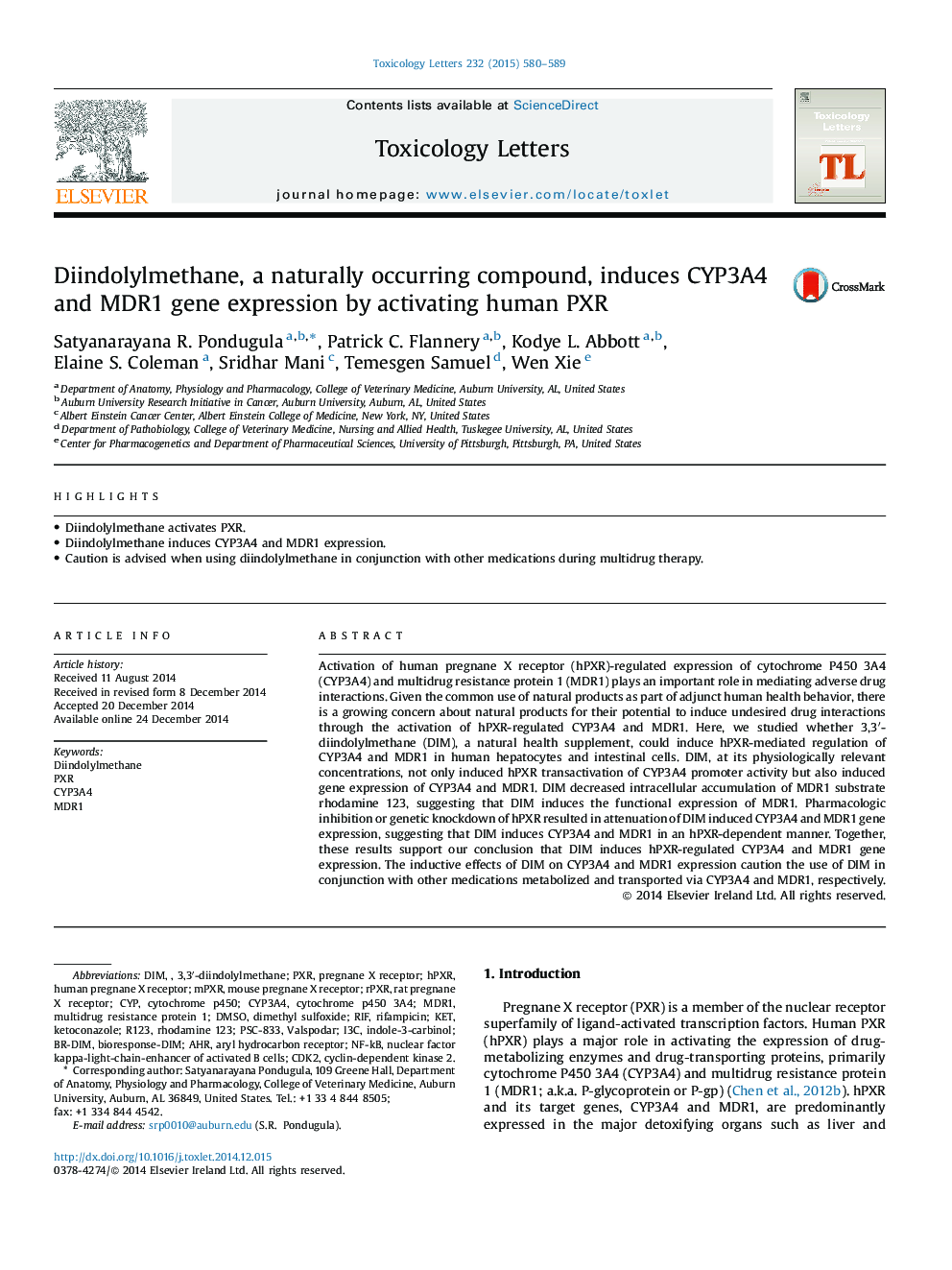| Article ID | Journal | Published Year | Pages | File Type |
|---|---|---|---|---|
| 2598869 | Toxicology Letters | 2015 | 10 Pages |
•Diindolylmethane activates PXR.•Diindolylmethane induces CYP3A4 and MDR1 expression.•Caution is advised when using diindolylmethane in conjunction with other medications during multidrug therapy.
Activation of human pregnane X receptor (hPXR)-regulated expression of cytochrome P450 3A4 (CYP3A4) and multidrug resistance protein 1 (MDR1) plays an important role in mediating adverse drug interactions. Given the common use of natural products as part of adjunct human health behavior, there is a growing concern about natural products for their potential to induce undesired drug interactions through the activation of hPXR-regulated CYP3A4 and MDR1. Here, we studied whether 3,3′-diindolylmethane (DIM), a natural health supplement, could induce hPXR-mediated regulation of CYP3A4 and MDR1 in human hepatocytes and intestinal cells. DIM, at its physiologically relevant concentrations, not only induced hPXR transactivation of CYP3A4 promoter activity but also induced gene expression of CYP3A4 and MDR1. DIM decreased intracellular accumulation of MDR1 substrate rhodamine 123, suggesting that DIM induces the functional expression of MDR1. Pharmacologic inhibition or genetic knockdown of hPXR resulted in attenuation of DIM induced CYP3A4 and MDR1 gene expression, suggesting that DIM induces CYP3A4 and MDR1 in an hPXR-dependent manner. Together, these results support our conclusion that DIM induces hPXR-regulated CYP3A4 and MDR1 gene expression. The inductive effects of DIM on CYP3A4 and MDR1 expression caution the use of DIM in conjunction with other medications metabolized and transported via CYP3A4 and MDR1, respectively.
